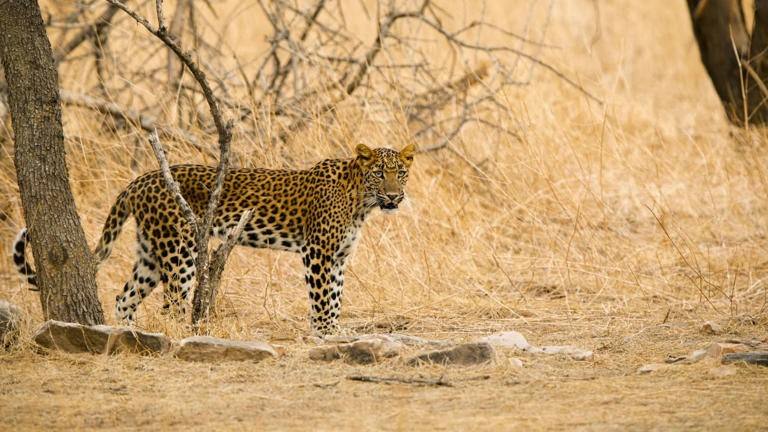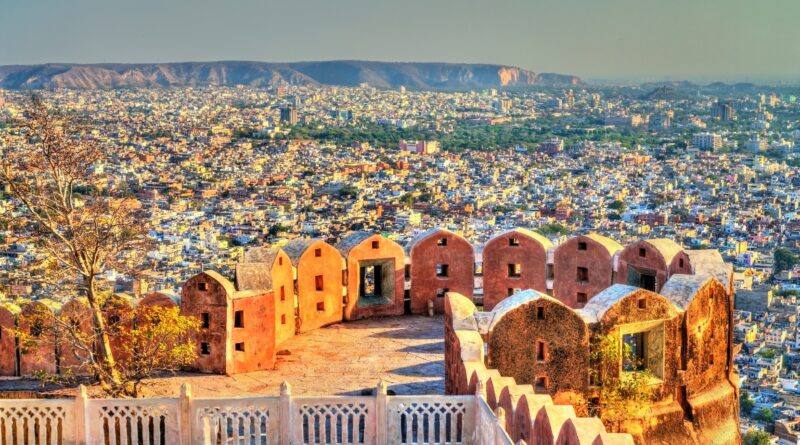Informative: The Hidden World Beyond Palaces In Jaipur
Jaipur Beyond the Palaces: Hidden Attractions You Must Visit
Explore the Pink City’s Best-Kept Secrets
When one mentions Jaipur, images of towering forts, rose-tinted palaces, and bustling bazaars instantly come to mind. Yet, behind this familiar curtain of grandeur lies a lesser-known Jaipur—quiet, reflective, rooted in heritage, and brimming with offbeat experiences. As the capital of Rajasthan and a proud component of the Golden Triangle tourist circuit (along with Delhi and Agra), Jaipur sees nearly 2 million international tourists annually, according to the Ministry of Tourism (Government of India, 2023). But how many of them truly discover Jaipur beyond Amer Fort and Hawa Mahal?
This article invites you to journey off the beaten path. We explore nine extraordinary yet underappreciated destinations in and around Jaipur that will enrich your understanding of this ancient city’s layered character. Whether you are a returning visitor seeking fresh perspectives or a first-timer hungry for deeper cultural immersion, these hidden treasures promise authenticity, wonder, and an intimate glimpse into Jaipur’s evolving soul.
1. Panna Meena Ka Kund – A Geometric Marvel from the Past
Tucked away just a short walk from the more frequented Amer Fort, Panna Meena Ka Kund is a 16th-century stepwell that astonishes with its hypnotic symmetry. This water reservoir served as a communal space where locals once gathered to fill pots, rest under the afternoon sun, or simply socialise.
With its unique criss-cross staircases forming an 8-level pattern, the stepwell is not only an architectural wonder but also a favourite subject for photographers and artists. In an era where water management is becoming a global concern, structures like this provide insight into ancient India’s sustainable design thinking. Entry is free, and it remains relatively uncrowded—a tranquil spot to reflect on history’s quieter triumphs.

📍 Location: Amer, 10 km from Jaipur City Centre
🎟️ Entry Fee: Free
🕒 Best Time to Visit: Early morning or late afternoon
2. Galtaji Temple (Monkey Temple) – A Sacred Oasis in the Hills
Hidden amidst the rocky folds of the Aravalli Hills lies Galtaji, an ancient Hindu pilgrimage site often nicknamed the Monkey Temple. Dating back over 500 years, this spiritual retreat is centred around a series of natural freshwater springs that feed into seven sacred water tanks, or kunds, the most revered being the Galta Kund believed never to run dry.
What distinguishes this site is its dramatic location—perched within a steep gorge, surrounded by cliff temples and visited daily by hundreds of macaques. The temples themselves, adorned with pink sandstone and frescoes, are dedicated primarily to Lord Hanuman. Despite its religious importance, Galtaji sees fewer crowds than the city’s central temples, offering a meditative, almost mystical experience.
📍 Location: Galta Ji, 10 km east of Jaipur
🐒 Tip: Carry no food in your hand—monkeys here are spirited!
3. Anokhi Museum of Hand Printing – A Tribute to Textile Heritage
For connoisseurs of craftsmanship and lovers of slow fashion, the Anokhi Museum of Hand Printing is a rare gem. Located in a restored haveli in Amer, this museum pays homage to Rajasthan’s iconic hand-block printing traditions. Supported by the Anokhi clothing brand, the museum documents every stage of block printing—from carving wooden blocks to dyeing techniques.
Workshops and live demonstrations allow visitors to engage directly with artisans, making this not just an exhibition but a living classroom. Given that the handloom and handicraft sector employs over 4.3 million people in India (as per Handloom Census 2020), places like Anokhi serve an educational role that goes beyond aesthetics—they help keep rural economies and heritage alive.
📍 Location: Khedi Gate, Amer
🎟️ Entry: ₹30 for Indian nationals, ₹80 for foreigners
4. Jawahar Kala Kendra – A Modernist Temple for the Arts
Jaipur’s commitment to culture is not just about conserving the past—it also involves embracing the present. Jawahar Kala Kendra (JKK), designed by the legendary architect Charles Correa, is a bold example of modernist architecture inspired by the ancient Vastu Purusha Mandala. This contemporary art centre features multiple exhibition halls, an open-air theatre, a library, and a café that buzzes with conversation and creativity.
JKK serves as a nucleus for cultural events, film screenings, craft fairs, and artist residencies. For anyone interested in the arts—visual, literary, or performing—it offers a vibrant snapshot of Rajasthan’s creative pulse in the 21st century.

📍 Location: JLN Marg, Jaipur
🖼️ Must Attend: The annual Jaipur Art Summit or craft bazars hosted seasonally
5. Dolls Museum – Cultural Diversity in Miniature
Inside the grand Albert Hall Museum complex, the Dolls Museum often goes unnoticed. But those who enter are in for a delightfully unexpected global journey. Featuring over 200 dolls from around the world—including Japan, Norway, Mexico, Uganda, and various Indian states—this compact museum captures cultural identity through miniature clothing, accessories, and facial expressions.
It is especially rewarding for children and ethnography enthusiasts, revealing how everyday attire reflects tradition and climate across continents. Established in the 1970s, it continues to expand its collection and remains a quiet reminder of our shared humanity.
📍 Location: Museum Complex, Ram Niwas Garden
👨👩👧 Ideal for: Families and school visits
6. Royal Gaitor Tombs – Sculpted Silence for Jaipur’s Kings
Beyond the bustling roads leading to Nahargarh Fort lies a hauntingly beautiful necropolis—The Royal Gaitor Tombs. These marble cenotaphs commemorate the maharajas of Jaipur and exhibit exemplary Rajput architecture, with domes, chhatris (canopies), and floral filigree carved in stone.
Far less frequented than the main palaces, the tombs offer solitude and artistic richness in equal measure. Maharaja Sawai Jai Singh II’s cenotaph, in particular, stands out with its intricate carvings and peaceful setting. As sunset bathes the marble in gold, one feels the passage of time—and power.
📍 Location: Brahmpuri, foothills of Nahargarh Fort
🏛️ Best for: Quiet reflection and heritage photography
7. Nahargarh Biological Park – Where the Wild Things Roam
Spanning over 720 hectares in the Aravalli range, Nahargarh Biological Park is home to some of India’s most iconic wildlife. It shelters leopards, Asiatic lions, Bengal tigers, wolves, sloth bears, and a vast variety of birds and reptiles. Unlike a zoo, the park emphasises conservation and has breeding programmes in place.
The park is part of the larger Nahargarh sanctuary and is increasingly popular with schools and ecotourism advocates. With India losing forest cover to urban expansion, destinations like this become critical touchpoints for awareness and education.
📍 Location: Near Kukas, Delhi–Jaipur Highway
🚙 Entry Fee: ₹50–₹200 (camera charges extra)
🌿 Tip: Visit between October–March for cool weather and better sightings
8. Jhalana Leopard Reserve – Urban Jungle Safari
Not many cities can boast of a wildlife reserve within municipal limits, but Jaipur’s Jhalana Leopard Reserve offers just that. Spanning 20 square kilometres, this dry deciduous forest harbours over 30 leopards, alongside blue bulls (nilgai), striped hyenas, foxes, and a dazzling array of birds.
The park is gaining popularity for its successful leopard sightings, thanks to regulated gypsy safaris and careful conservation. As India balances urban growth with biodiversity, Jhalana stands as a model of co-existence between city and wilderness.

📍 Location: Malviya Nagar Industrial Area
🚙 Safari Booking: ₹800–₹1500 per person
📸 Ideal for: Wildlife photographers and birding enthusiasts
9. Hathi Gaon – Elephant Village with a Heart
For many, elephants symbolise India’s cultural warmth and wisdom. Yet, their treatment has often been under scrutiny. Hathi Gaon, or Elephant Village, offers an ethical and immersive way to interact with these majestic animals.
Situated near Amer, the village was conceptualised to house and care for Jaipur’s working elephants, giving them a better life with access to water, food, and medical care. Visitors can engage in feeding, bathing, or walking with elephants under strict guidelines that ensure their dignity. Unlike elephant rides—which are discouraged by animal rights groups—Hathi Gaon promotes empathy and education.
📍 Location: Amer Road, near Amer Fort
🐘 Managed by: Rajasthan Forest Department
💚 Best For: Conscious travellers and families with children
A City Beyond its Surface
Jaipur has often been described as a city frozen in rose-coloured time. But if one listens closely—to the echoing steps inside Panna Meena Ka Kund, to the songs sung at Galtaji, or to the rustle of a leopard brushing past Jhalana’s scrub forest—one realises this is a city alive in many dimensions.
In 2024 alone, Jaipur welcomed over 5.5 million domestic tourists (Rajasthan Tourism Statistics Report), but the real magic still lies in its lesser-known corners. For the discerning traveller, the story of Jaipur begins only when the obvious chapters end.
So, next time you visit Jaipur—walk a little further, listen a little closer, and stay a little longer. The Pink City will show you colours you never knew existed.
© The WFY Magazine – June 2025 | Travel & Leisure
For reprints, contributions, or feedback, write to: wfymagazine@gmail.com
Website: www.thewfy.com





